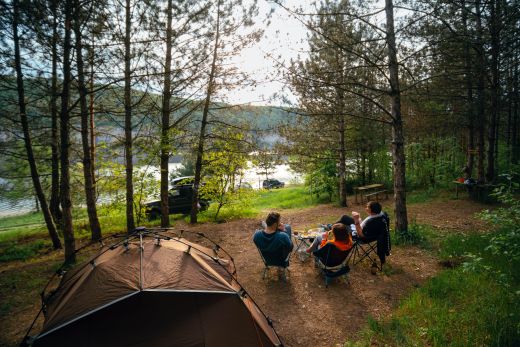A tent is one of the most important pieces of gear in your camping kit. With the right tent, you can get a good night’s sleep and sit out bad weather in comfort. But with the wrong tent, you’re more likely to spend your time trying to work around a living space that just doesn’t suit your purposes. So, this is an important decision, which is why you have wisely decided to do a little research before making a purchase decision. It’s a good thing then that you have found this guide on how to choose a camping tent – one of the most comprehensive available anywhere. In it, you will learn what to look for in terms of capacity, features, and other factors when choosing a camping tent. This article will also explain how to choose a tent that can be used for backpacking and car camping, but it’s worth noting that there is a separate guide on choosing a backpacking tent if that is what you are mostly going to be using your tent for.
Capacity
There’s no need to squeeze yourself into a tent that is barely large enough for your needs when you’re not going to carry it more than a few hundred yards. Most tents are only just large enough for the number of people specified in the tent’s advertised capacity. What this means is that a 2-person tent will typically have enough space for two people and not much else. This can be quite limiting if you want to store gear inside your tent or need space for a four-legged friend. That’s why it is recommended to go with a 3-person or even 4-person tent even if it’s going to be used only by you and one other person. Likewise, if there are four of you, you might consider a 6-person tent.
That said, you also need to consider factors that might make a larger tent less practical. For example, the raised tent pads found in many campgrounds are typically around 10 or 11 feet long, but many 6-person tents are over 12 feet with fly attached. On that note, it’s important to always look at both floor area and the total space covered by a tent once the fly has been extended – not only because this will give you a more accurate idea of a tent’s capacity but also because such measurements will allow to better judge whether a tent will fit onto the sites that you use most often.
Internal divisions
If campsite size is not going to be an issue for you, you might consider a 6 or 8-person tent with multiple rooms. The advantage of a second room or large front vestibule is that it gives you a covered living area where you can put a table and chairs (somewhere to play games on a rainy day) and store large items like bikes. Some of the largest tents, like the Zempire Evo, actually have multiple internal divisions, allowing for a variety of configurations. It’s also possible to create a covered living area with a separate shelter, but I will get into that in more detail in the section on shelters.
Types of tent
The tents commonly used for car camping can be put into four broad categories.
Crossover tents
If you are going to use one tent for both car camping and backpacking, this is by far your best choice. Crossover tents are more roomy than the average backpacking tent while still being light and compact enough to carry miles into the backcountry. Given that you’ll probably use this kind of tent for backpacking and car camping, it’s worth giving extra thought to capacity. A 3-person tent is noticeably heavier than the 2-person version, and you might be tempted to go with a tent that is only just large enough for your needs. To get that right, you should check that a tent is wide enough to accommodate the sleeping pads that you will use for car camping. The memory foam pads used by many campers are significantly wider than the kinds of pads used for backpacking. You might find that you need a 3-person tent to fit a pair of 24” pads.
- Nemo Dagger 3P (Buy at REI)
- Big Agnes Salt Creek SL3 (Buy at REI)
- Mountain Hardwear’s Mineral King 3 (Buy at Backcountry.com)
- Marmot Tungsten 3P (Buy at Backcountry.com)
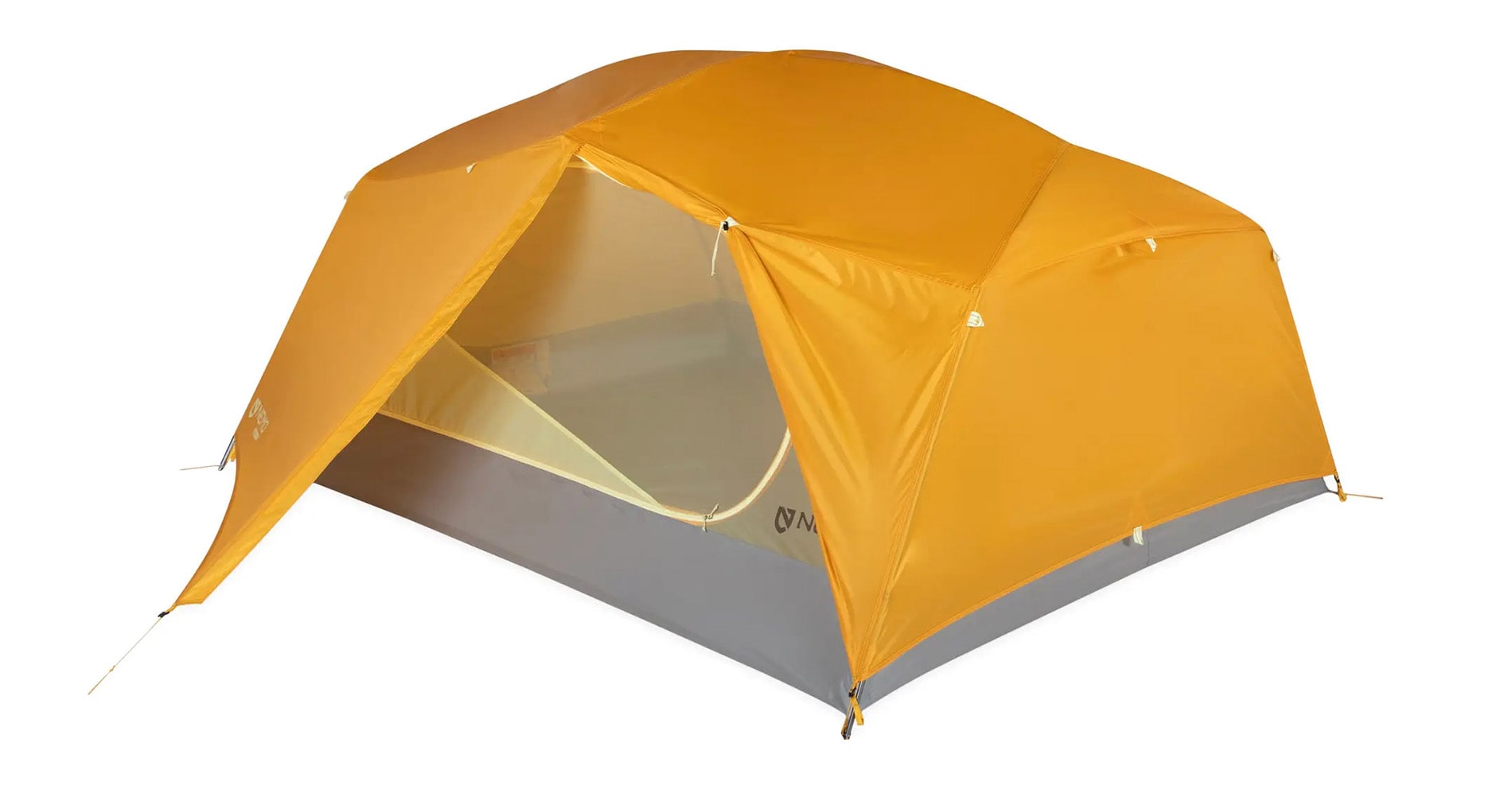
Large pole-supported tents
Whereas you’re unlikely to find a crossover tent designed for more than four people, dedicated car camping tents get big enough to accommodate eight or more people. But there is another big difference between car camping tents and crossover tents: height. While crossover tents are similar in profile to backpacking tents and require tenants to crouch or lie down, car camping tents have ceilings high enough for the average person to stand up inside. This makes car camping tents much easier to enter and exit, and it allows campers to get dressed while standing up. This is especially useful when you need to change out of wet or muddy clothes into dry camp clothes as you would after a trail run or bike ride.
- Big Agnes Big House 6 (Buy at REI)
- Marmot Limestone 6P (Buy at REI)
- MSR Habitude 6 (Buy at Backcountry.com)
- Nemo Aurora Highrise 4 (Buy at Backcountry.com)
- Kelty Discovery Basecamp 6 (Buy at Backcountry.com)
- Eureka! Copper Canyon LX 8 Person (Buy at Backcountry.com)
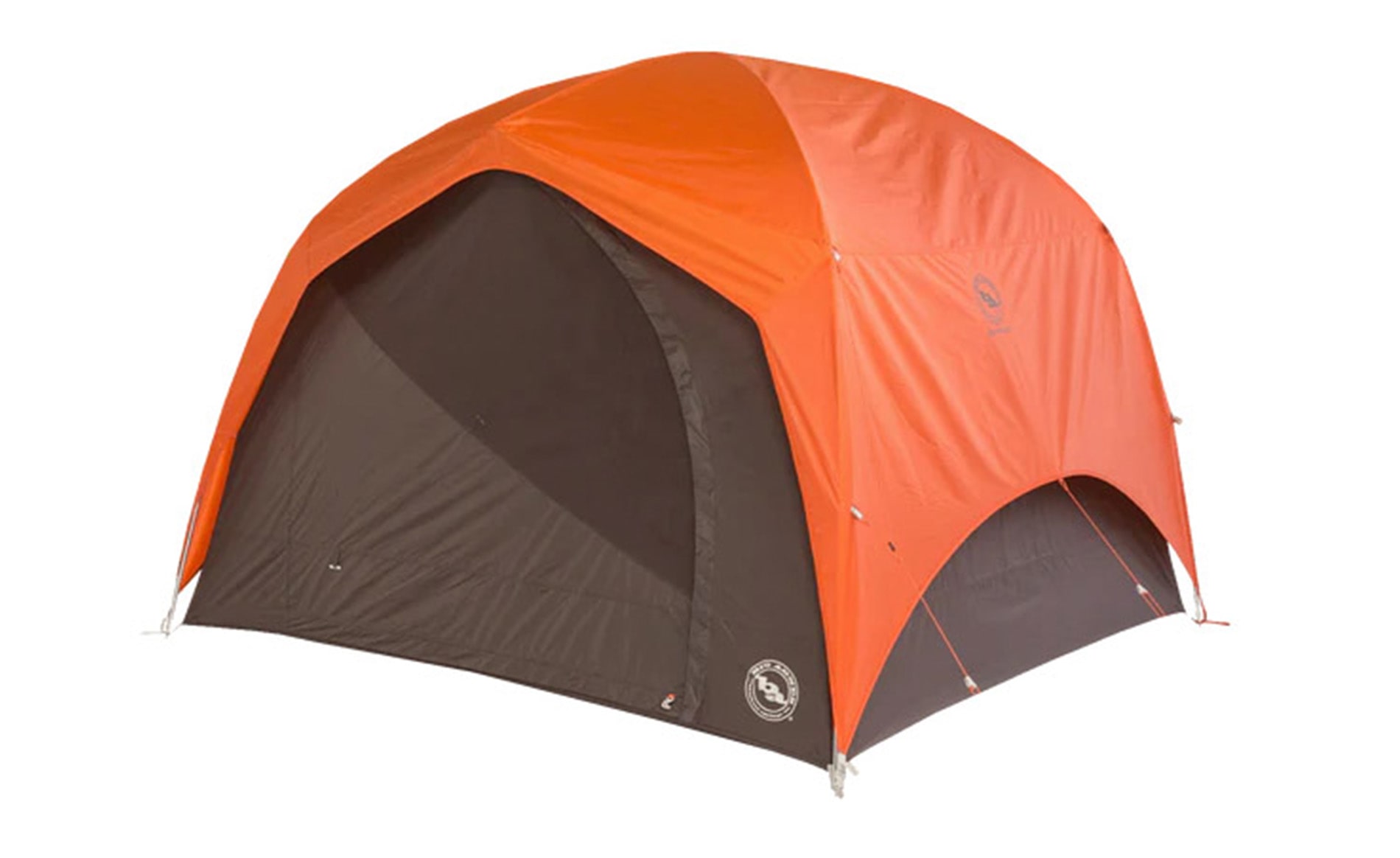
Inflatable tents
Instead of using poles, inflatable tents rely on air-filled beams for their structural stability. Besides making a tent quite stable and robust, these ribs also make inflatable tents easier to set up. Whereas a pole-supported tent requires campers to figure out how dozens of pole sections connect together, there’s very little faffing involved in setting up an inflatable tent. You simply inflate one tube and then move onto the next – a process so straight forward that one person can do it. Of course, air tents are not without their downsides. For most people, the most significant of these is price since an inflatable tent can cost well over $500 – although this might be offset by better durability. The other downside to an air-filled tent is that they can puncture – something that is not always easy to fix.
- Zempire Aerospeed 6 (Buy at REI)
- Zempire Evo TL V2 (Buy at REI)
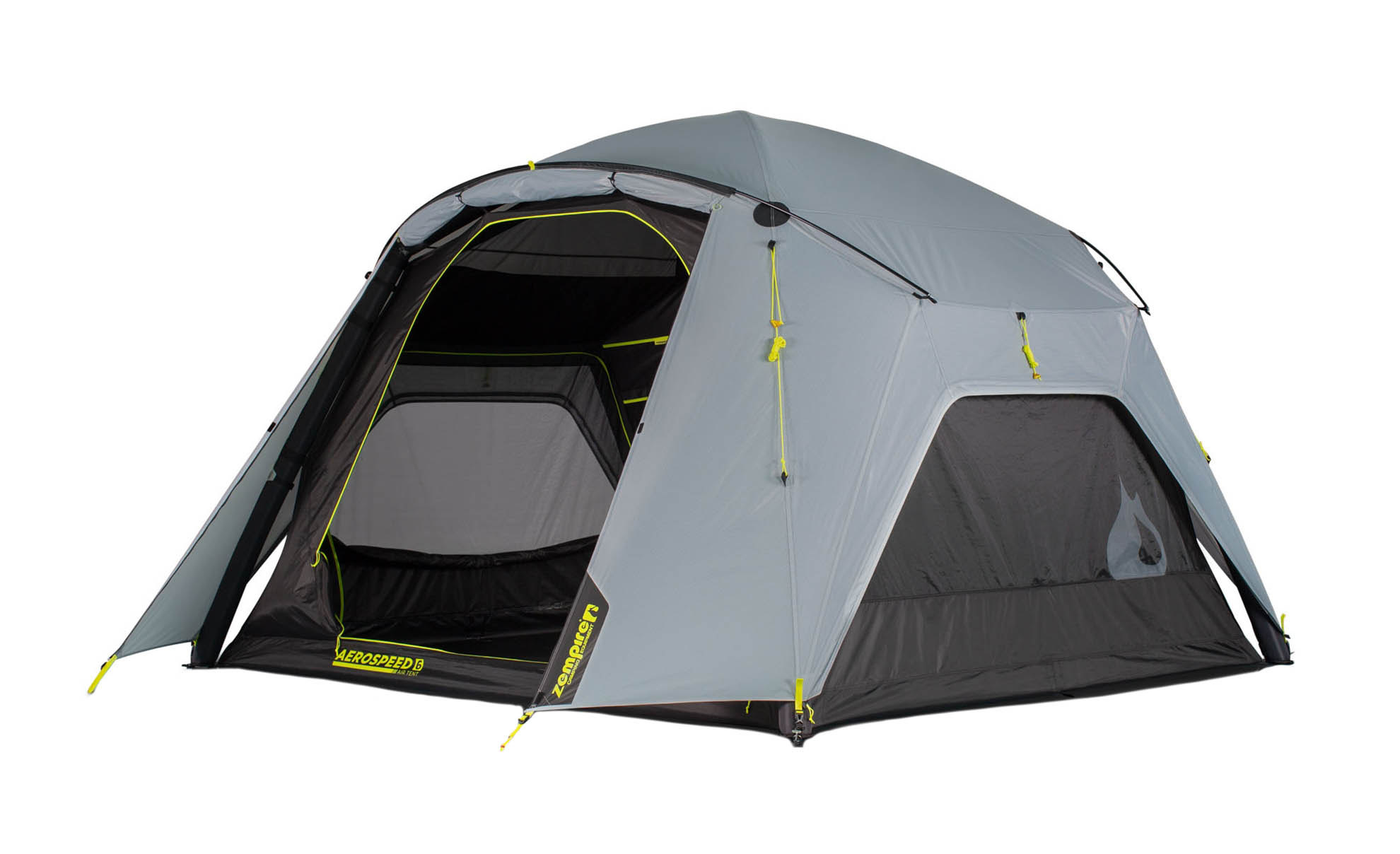
Canvas tents
Besides their classic appeal, there are some real advantages to canvas tents. Because they are made with heavier fabrics, canvas tents are significantly more durable (lasting 10 to 20 years even with regular use) and are better at insulating campers from both heat and cold. Some canvas tents are also compatible with wood stoves, making them particularly well suited to camping in cold weather. The downsides to canvas tents are that they are heavy and expensive, with prices ranging from $700 to $2000. Given their heft, they are also not easy to set up, making them better suited to the kind of camping trips where you spend at least several days in the same place. Popular brands include White Duck, Springbar and Kodiak.
- White Duck Rover Scout 8 x 13’ (Buy at REI)
- Springbar Classic Jack 100 (Buy at Backcountry.com)
- Kodiak Canvas Flex-Bow VX 10 x 10’ (Buy at Kodiak Canvas)
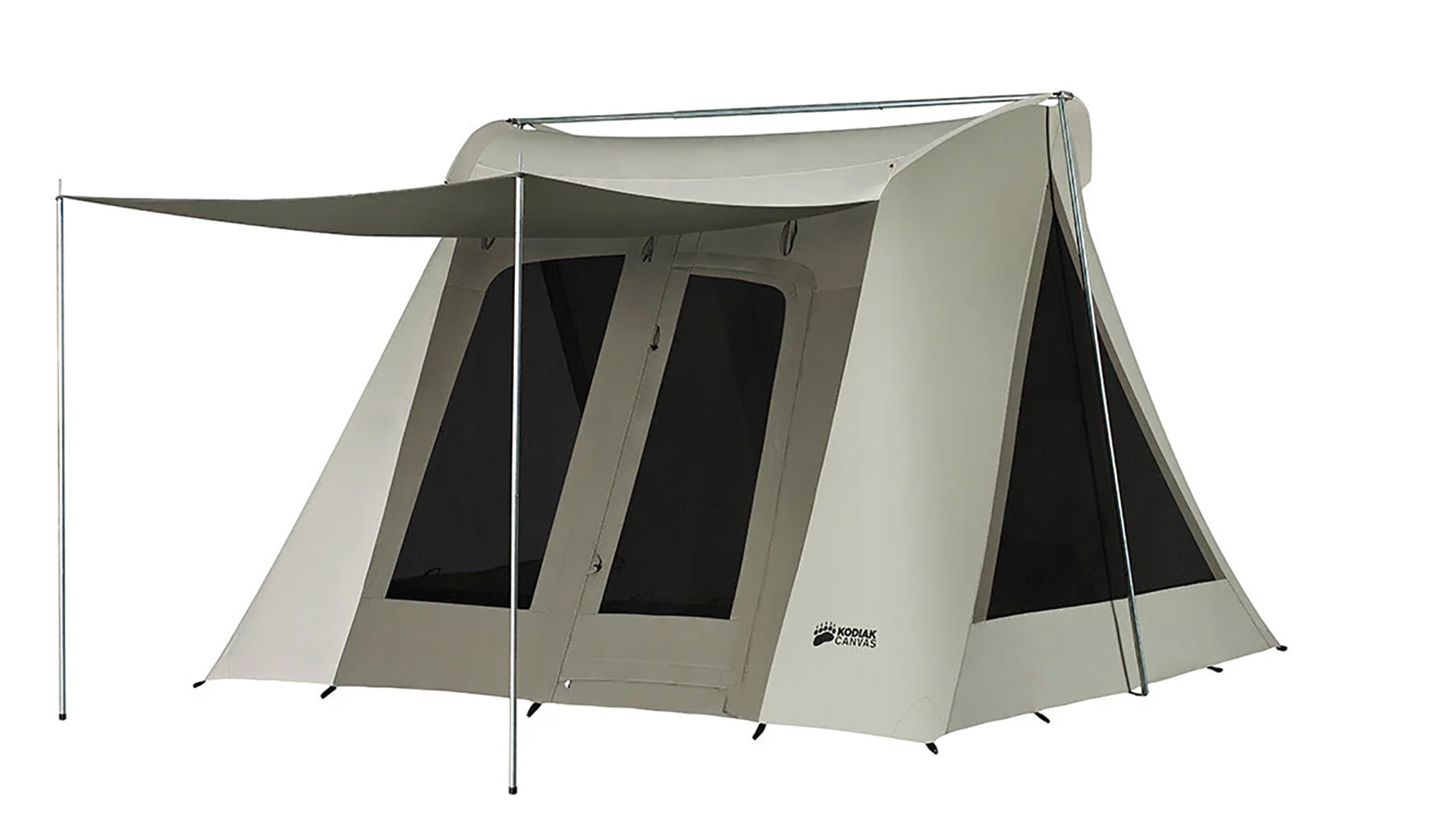
Tent features
It’s worth considering the following features when choosing a new tent.
Poles or support system
A tent’s support system can make the difference between a 10-minute set up and a 30-minute set-up. Features that make setup easier include color-coded poles and sleeves, pole hubs (keep poles attached to the right ports even when folded up), clips that allow a tent body to be attached to poles without sleeves, and inflatable ribs, which negate the faff involved in figuring out which poles go where. But a tent’s features only tell half a story, and you will also want to look for videos and reviews that tell you how much time it takes to pitch a tent.
Doors and mesh panels
Here there are two things worth considering: how easy is it to get into and out of a tent, and what are your options to increase ventilation if you need to. For car camping tents, two doors should be a minimum. Besides making it possible to exit a tent without stepping over sleeping campers, two doors also allow you to increase air flow in hotter conditions. Dome and geodesic tents should also have mesh inner walls, which also improve air flow and prevent the build up of condensation inside a tent. Larger tents are often single-walled and should have large mesh windows.
Vestibules and pockets
Sufficient storage can make a tent a lot more liveable. Interior pockets are useful for storing smaller items like headlamps, phones and books, while vestibules are great if you want to keep bags and other large pieces of gear under cover but not in your sleeping quarters – something you’ll want to avoid if that gear is wet. Larger vestibules are also great for putting on or taking off shoes and for changing clothes. Extra storage can also free up space in your car when you want to day trip, and it’s worth noting that a light vehicle is also more fuel efficient.
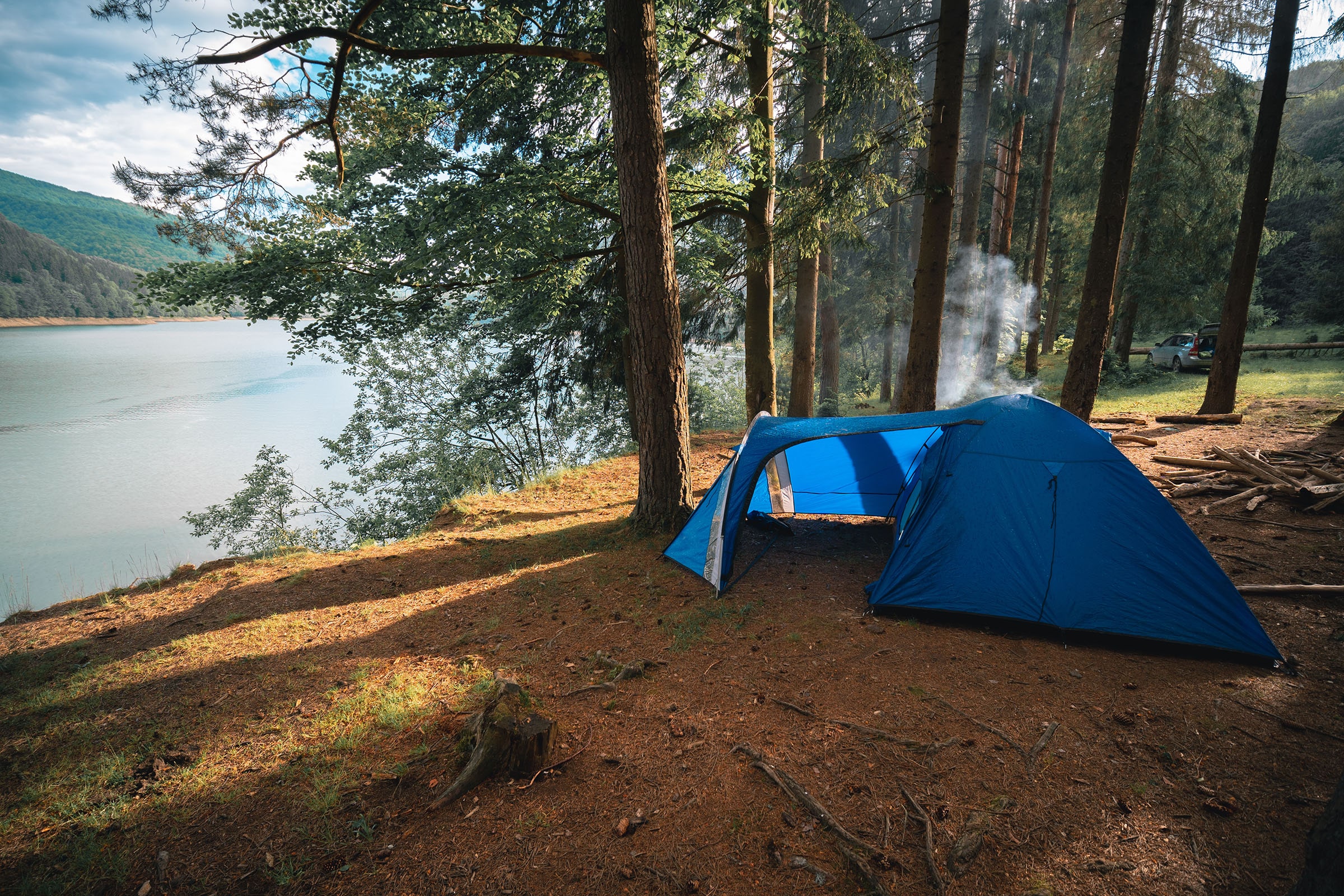
Other factors
Depending on your needs, you might want to look for a tent that is lighter, easier to pitch, or more durable.
Weight and packed size
When looking for a new camping tent, one of the first things you should ask yourself is whether you will use it for backpacking? If the answer is yes, you should look for a crossover tent – one that is large enough to be comfortable but light enough to carry – and this will narrow your search significantly. If you are not going to use the tent for backpacking, weight won’t be as important, but it will still be a factor. A canvas tent can weigh as much as 100 pounds. If you don’t drive a large SUV or truck, you might not want to dedicate this much weight or capacity just to your tent.
Durability
There is a significant difference in durability between budget and high-end camping tents. Spend more, and you will get higher quality materials that will stand up better to frequent use. Even then, it’s unusual for a tent to last more than five years, the exception being canvas tents which can last between 10 and 20 years if well looked after. A high quality inflatable tent might also last longer than 5 years given that such tents are made from thicker and more durable material. Regardless of the type of tent you choose, you can ensure that you get the most out of it by looking after it and storing it only when it’s properly dry.
Ease of setup
Given their size and complexity, car camping tents take more time and effort to set up. And some larger tents need at least two people for the set up. If you are going to be moving camp regularly – as you do when overlanding – you’ll want to give this special consideration. Ideally, the tents on your short list will have setup videos, which can show exactly how each is pitched. Alternatively, you might be able to do a test setup in store. Inflatable tents are almost easier to set up than pole-erected tents, but if you decide to go with one of the latter, look for a tent with features that make setup easier – like color-coded clips and poles.
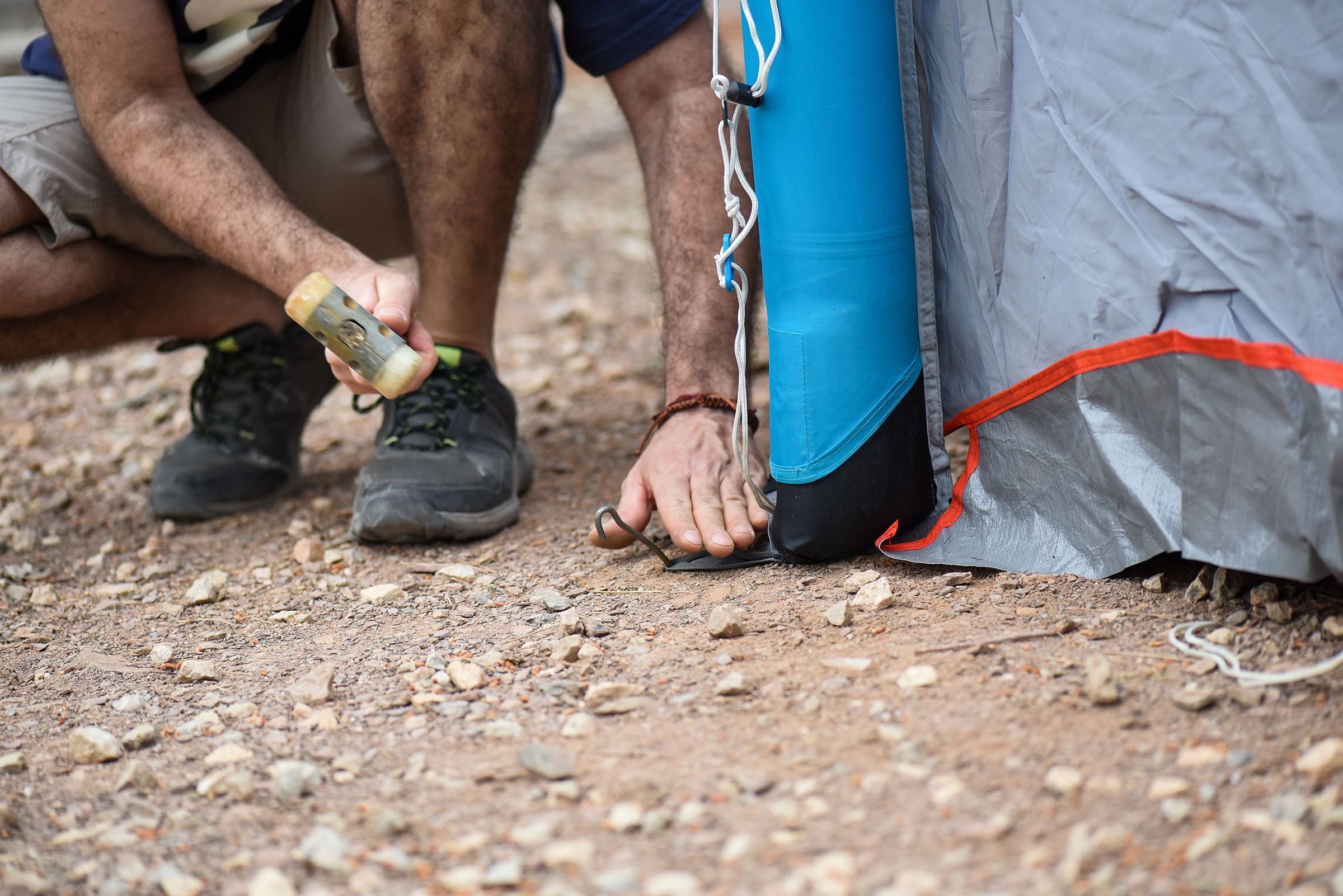
Season ratings
Besides a tent’s size and features, it’s also worth thinking about the type of conditions you are going to use it in. Some tents are better suited to warmer weather while others are designed for colder and windier conditions.
3-season tents
The vast majority of camping tents are designed for 3-season use and will stand up to moderate winds, heavy rain and light snow – the kind of conditions you can expect between spring and fall. Since they are intended for warmer weather, these tents typically have large mesh panels and vents to aid ventilation and are made from lighter materials than 4-season tents. They are also typically more affordable than 4-season tents. If a tent is not designated as a 3 or 4-season designation, assume that it is intended for 3-season use.
4-season tents
All 4-season tents should shrug off heavy snow, but beyond that they can vary greatly in the amount of protection they offer. Expedition tents, with their stronger poles and heavy flies can stand up to an alpine storm while lighter winter tents are best used below the treeline (probably not a factor when choosing a camping tent). Besides having steeply pitched roofs for shedding snow and deflecting wind, 4-season tents also have fewer doors and mesh panels to retain heat better. Heavier and more durable 4-season tents are among the most expensive tents out there.
Using a separate shelter for your kitchen
If your goal is to cover both your sleeping quarters and living area, you actually have two options. You can opt for a single large tent with multiple rooms, or you can go with a smaller tent for sleeping in and a separate shelter for cooking, eating, playing games, etc. There are a few advantages to this kind of setup. The first upside is that a smaller tent is more likely to fit onto a tent pad or into the corner of a confined campsite. And the second is that a smaller tent is usually quicker and easier to set up. On longer trips, where you are moving camp regularly and don’t need to cover your kitchen area at every new destination, it’s an advantage to have a smaller tent that sets up quickly.
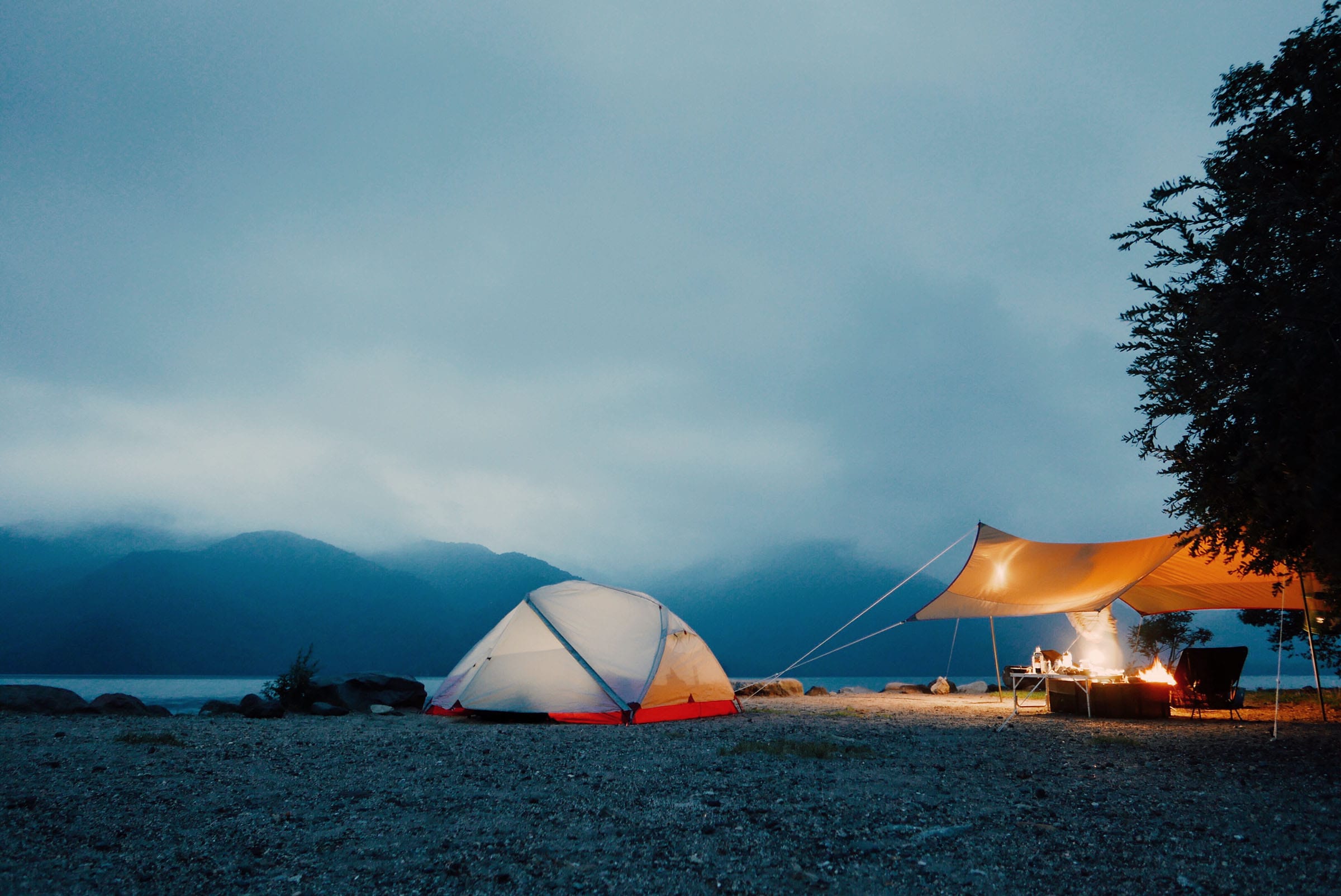
Your living area shelter could be a separate tent, or it could be a floorless shelter like the Big Agnes Sage Canyon. It could even be a vehicle-mounted sunshade if that wouldn’t affect your ability to pack up quickly and do short day trips. The advantage of the latter two options is that they are cheaper and lighter than tents that would cover the same area. Vehicle-mounted sun shades are even lighter than freestanding shelters, but personally, I’ve found that the extra space and convenience of a shelter (which doesn’t have to be taken down when you want to go somewhere) is well worth the extra cost and weight.
- Kelty Backroads Shelter (Buy at REI)
- Big Agnes Sage Canyon Plus (Buy at REI)
- Dometic HUB 2 REDUX (Buy at REI)
- Eureka NoBugZone Screenhouse (Buy at Backcountry.com)
- Stoic Speed Up Screen House (Buy at Backcountry.com)
- NEMO Victory Screenhouse (Buy at Backcountry.com)
Rooftop tents
Instead of a freestanding tent, you can opt for a roof top tent, but you’ll want to give this decision serious thought. While rooftop tents can be easier to set up than regular tents, they are not without their downsides. The most significant of these is that a rooftop tent forces you to camp where you park your vehicle. In most situations this won’t be a problem, but then there are those campsites that just aren’t suitable for car camping. Some parking spaces are too small for fold-out tents while others are far from level (a prerequisite for a good night’s sleep). Rooftop tents also require you to take down your tent before you drive anywhere. This can prove to be a real inconvenience when you want to go on daytrips.
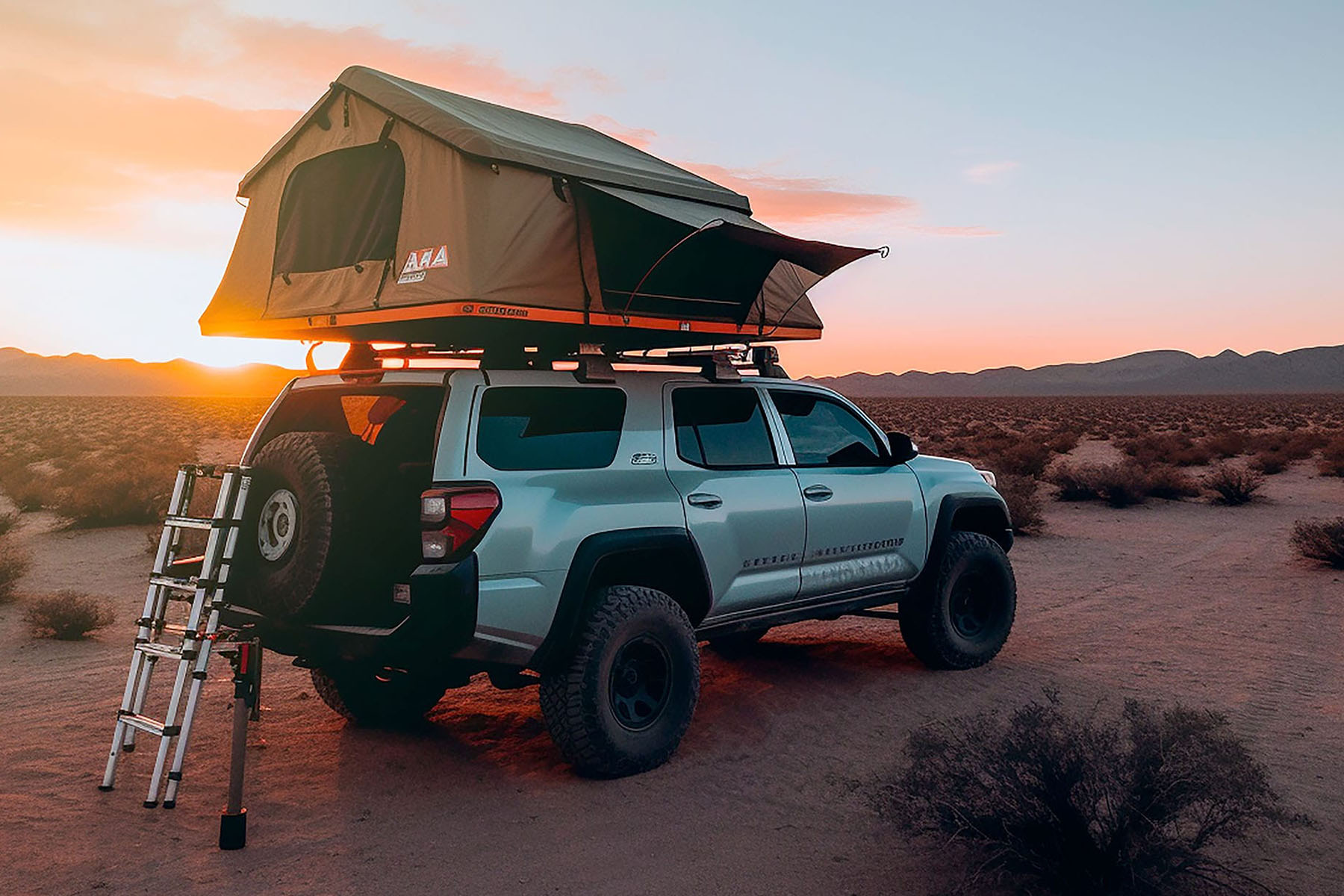
These are just a few things you’ll want to think about before deciding on getting a rooftop tent. For a more comprehensive list of the pros and cons of roof tops tents, see my article on rooftops tents.
- Yakima SkyRise HD Small Tent (Buy at REI)
- iKamper BDV Duo Tent (Buy at REI)
- Rhino-Rack Roof Top Soft Shell Tent (Buy at Backcountry.com)
- Roam Vagabond XL Rooftop (Buy at Backcountry.com)
Learn more
You now know everything you need to know about choosing a camping tent. But don’t stop here. On this website you’ll find many more useful articles like how to choose tent stakes, how to dial in your sleep system, and how to choose a good campsite. You can also sign up for my newsletter to get the latest from Trail & Crag delivered straight to your inbox.
